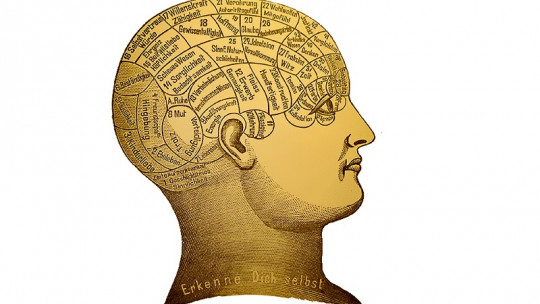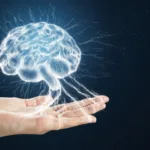
Problems are an inherent part of life. The world we live in often presents us with complex situations with which we must deal, and which provide the opportunity for the development of our potential.
However, we also know that difficulty solving problems is one of the main risk factors for the development of emotional disorders. The way we deal with them, therefore, is important for well-being.
Today there are training methods in decision making which have extensive evidence on their functioning in multiple areas of life, and whose application is a key piece in many psychological treatment programs.
In this article we will review the Nezu and D’Zurilla model, as it is one of the most well-known and effective. It was conceived in order to adapt to diverse contexts, in contrast to others whose range of application is more limited.
Nezu and D’Zurilla Decision Making Training
The problem-solving program of these authors is a structured and sequential model, which stands out for its simplicity. It consists of 5 different steps, and there is the possibility of going back to some of the stages already completed when certain circumstances are met, as will be detailed. This intervention is included in the category of cognitive-behavioral treatments and although it is easy to understand, mastering it requires practice.
The method is based on the rigorous analysis of the behaviors and coping strategies of people with excellent problem-solving skills; but presented in operational, clear and reproducible terms. In this section a review of all the steps will be made, detailing their characteristics.
Phase 1: Perception of the problem
The authors of this problem-solving model highlight the need to define exactly what problems are and what solutions are, as well as the different styles that people use to cope with the circumstances that generate stress. Understanding these concepts is an essential prior step to integrate the rest of the phases that make up the program so they are detailed below.
What is a problem
A problem is understood as any life situation that generates an adaptive response and that puts coping resources in motion to find a solution. Thus, the occurrence of a negative event, the loss of what is valued or esteemed, conflicts (apparently opposing decisions or in which the selection of an alternative implicitly implies the renunciation of another or others) can be considered as such. and frustration (appearance of obstacles that prevent the achievement of a goal).
The authors defend the idea that, in this phase, It is important to develop a perspective on the problems that implies considering them as a challenge and not as a threat.
What is a solution
Solutions are all those behaviors that seek to respond to a problem. Most situations in life do not have a perfect solution, but the best among all possible ones, this being the one that is intended to be located and applied through decision-making training. Objectively modifiable situations will require direct actions, but those that cannot be modified will involve placing emphasis on their emotional consequences.
What are the basic coping styles?
Three basic coping styles can be distinguished: the impulsive (a quick decision is made without thoroughly weighing all the possible angles of the problem or without foreseeing the consequences of the solution), the avoidant (the implementation of a solution is delayed, delaying coping or denying the existence of the problematic event) and the rational (supposes a balance between the previous two and is what is pursued with the application of the program).
Other aspects to consider
The choice of a possible solution must be carried out considering not only the benefits and harms to the person, but also the impact that the decision made may have on the environment.
Likewise, there must be sufficient material resources to carry it out, and a level of commitment proportional to the nature of the problem must be assumed. It is recommended that it first be applied to simple situations, progressively increasing their demand.
Phase 2: Definition of the problem
A well-defined problem is a half-solved problem. Therefore, the first step that must be carried out is to write on a sheet of paper (or on a similar physical medium), using as simple a sentence as possible (maximum twenty words), the problem we wish to address. It is a process in which the situation is reflected on, in order to capture all its nuances. At this point, not only the what, but also the how, when and why must be assessed.
With this step we will be able to translate a complex situation, which is often difficult to define, into more operational and less ambiguous terms. We will be able to reduce uncertainty and be able to observe the facts in terms of greater objectivity. Achieving a wording that fits the reality of the problem may be difficult at first, but we must dedicate the necessary time until we consider that the written words reflect with sufficient precision what is happening to us.
Along with the problem, We can also write the objective to be pursued, using simple terms and realistic expectations (otherwise the risk of abandonment will increase). If the goal we are pursuing is too complex or its resolution takes an excessive amount of time, it is useful to break it down into smaller logical steps whose achievement brings us little by little closer to it.
Phase 3: Generation of alternatives
In this phase, a brainstorming or brainstorming is carried out, through which we develop all the alternative actions that occur to us to address the problem detected. This process is built on three principles: that of quantity (alternatives as numerous as possible), that of variety (approaching the situation from all its fronts) and that of delaying judgment (indiscriminate selection of “anything that comes to mind”. “).
Phase 4: Selection of an alternative
At this point, we should have a written problem and a more or less long list of possible alternatives. Some of them will probably have seemed stupid to us while we were thinking about them, but we must remember that this is the moment reserved for their detailed evaluation, and not before. Now what we must do is evaluate them using two coordinates: the positive/negative aspects and the short/long-term consequences.
To make it simpler, we can draw a cross on a landscape sheet of paper, letting each line cross it completely and divide the space into four equal parts for each corner, namely: top left (short-term positive aspects), top right (long-term positive aspects), bottom left (short-term negative aspects) and bottom right (long-term negative aspects). In these spaces we will write everything that comes to mind, thinking in detail.
Each alternative will require its own grid, since all of them will have to be evaluated in the four possibilities mentioned. It is essential to keep in mind that we must incorporate into this reflection process the potential consequences of the decision on third parties and/or oneself, as well as the economic or material viability of the possible solution being reflected on. It is key to dedicate the time necessary to this step.
Phase 5: Implementation of the alternative and evaluation
In phase 5 we will have a written problem, along with all the alternatives that occurred to us during the brainstorming and the consequent process of reflection on the positive and negative aspects of them, in the short and long term. The time has come to make a decision, and choose a plan of action. There are two specific strategies for this, one quantitative and the other qualitative, but they are not exclusive (both must be used to reach the final choice).
Quantitative analysis
This phase is aimed at obtaining an “objective” assessment of each alternative, which can give a clue about its quality. Starting from a score that is located at the value zero (neutral), We will add one point for each positive aspect detected and subtract one point for the negative ones. Thus, if an option has three good ones and two bad ones, the score that will be given will be one. This analysis only offers a raw score, which requires a complementary qualitative vision.
Qualitative analysis
For this analysis we will make a personal assessment of the pros and cons, since the weight of each of them is subject to the values and goals of each of the people who develop the technique. It is important to make sure that they are consistent with the objectives that we set for ourselves when starting the exercise. The decision does not have to coincide with the quantitative assessment although usually the one that is chosen tends to be the best valued from both perspectives.
And now that?
Once the alternative is selected, it is necessary to commit to its implementation, since the previous analysis has been based on rationality and there is a great probability that it is the best of all possible options. It is very important to carry out a periodic evaluation of the consequences that the chosen solution is having for the development of the situation, and whether the resulting events satisfy the initially proposed objective or not.
We may observe that the chosen alternative, after some time, is not giving the expected results. In this case we have two options: keep it while we try to combine it with the second best option or decide to eliminate it and simply continue with the one that was still on the list. In the event that this new decision does not seem to be useful either, we can continue with the next one, until we find the appropriate one or notice that it does not appear on the list.
If we reach the definitive conclusion that none of the planned options allow us to improve the problem, we will return to phase 3 (search for alternatives) and resume the process from this point. With this we will once again develop new possible solutions, with the added advantage that by having delved deeper into the problem we will have experience that we did not have before, so we will improve this second time.
If after this circumstance we encounter a blocking situation again, Maybe it’s time to restart the process from the beginning. It may happen that the problem is not described exactly, or that the stated objective is unrealistic. In any case, even if the solution seems elusive, as long as we persist in searching for it we will acquire greater skill in the procedure and we will be able to automate the sequence of which it is composed.








